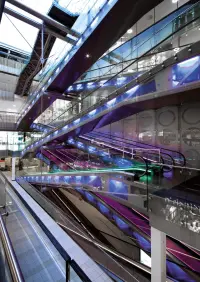More than just maintenance
New components and designs for a safer ride and more building appeal.
Making the right choice
Dozens of solutions, each designed by our expert teams to swiftly meet your most pressing needs.
Unlocking the future
Future-proof upgrades that enhance functionality, improve safety, connectivity and sustainability.
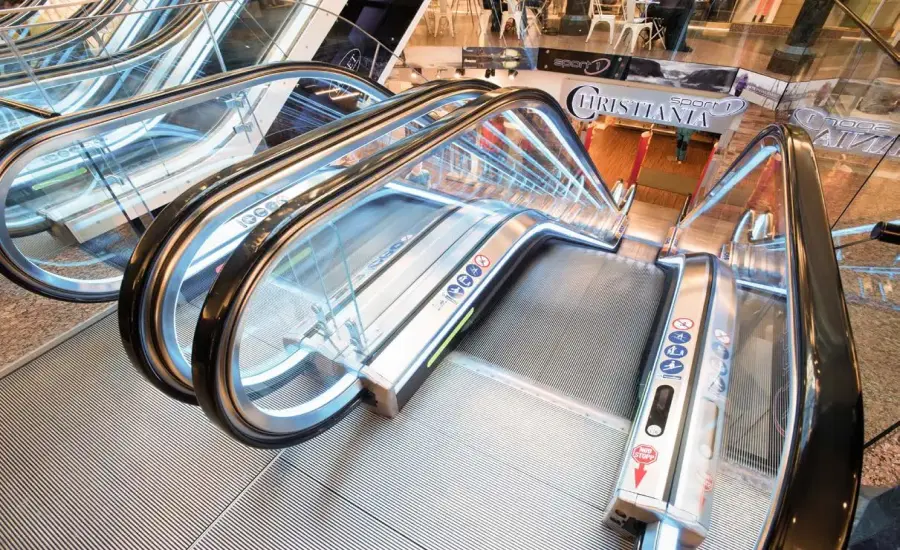
Building interfaces
Integrating new safety features helps to mitigate the potential accident risk due to gaps between a unit and the building.
Installed outside the balustrade and slightly higher than the handrail, they deter passengers from climbing over the side and falling.
Installed at the bottom of an escalator, these structures safely prevent climbing on the outside of the balustrade.
Retrofitting skirt brushes reduces the risk of people or objects becoming trapped in the gap between the steps and the skirting profile.
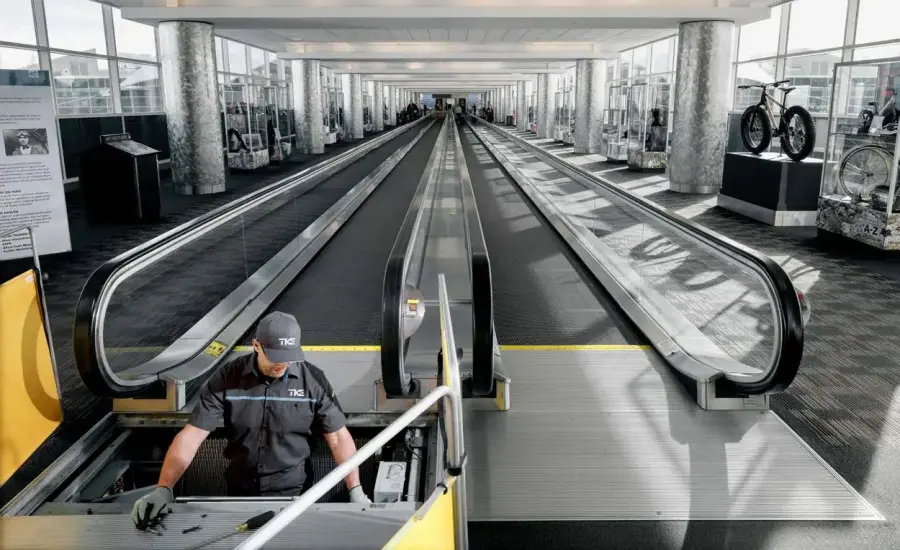
Unit safety
Transform your escalator to satisfy the latest standards by adding new safety features.
Ensuring passenger stability, a monitoring device stops the escalator if handrail speed deviates + 15% from the speed of the steps or pallets.
Immediately stops the unit to avoid injury if a damaged step or pallet is detected.
Welcomes passengers and can be intelligently programmed to communicate safety announcements and reminders.
Up to 60% energy savings in no-load drive with a frequency converter that runs the escalator at varying speeds: an energy-caving lower speed when unoccupied; and nominal speed as soon as someone enters.

An energy-saving option for infrequently used escalators. The unit only starts to move if a passenger approaches. If nobody is on the unit, it stops entirely with traffic lights to indicate readiness.

Running an escalator in two different modes at unchanged speed. During the start and if no load is detected, the escalator runs in star operation to reduce the current. If a load is detectd, the motor switches to delta operation.
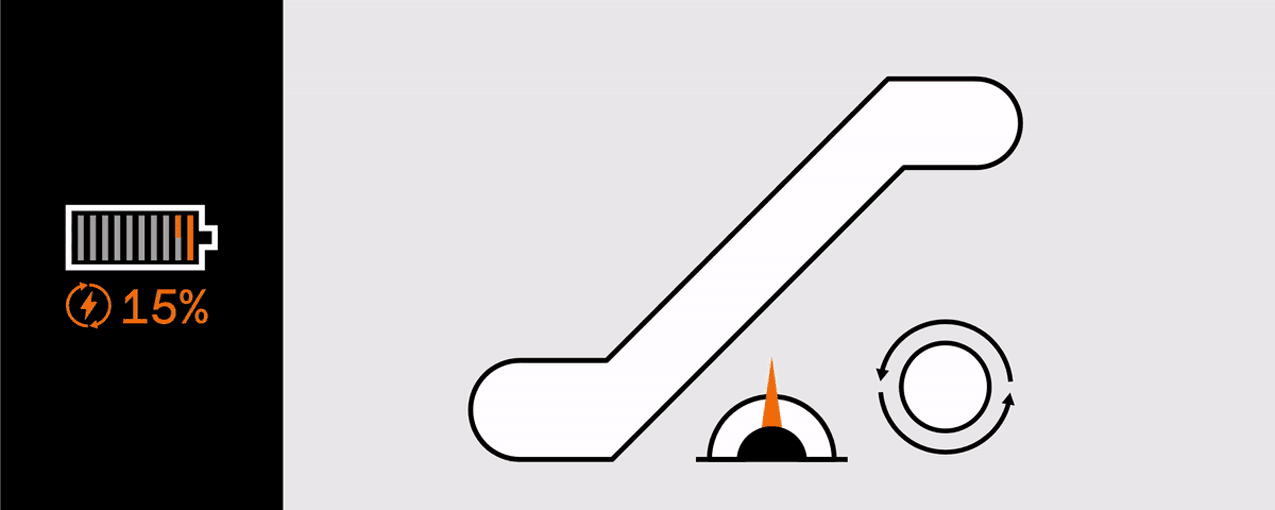
Just like slow speed operation, the escalator runs at two different speeds: the nominal speed as soon as someone enters and an energy-saving lower speed when noone is on the unit. If empty, it then stops for a defined period.


Essential for escalators with intermittent operation, traffic lights show approaching passengers the travel direction of the escalator.
Inner decking traffic lights show a scrolling green arrow for entry and flashing red symbol for exit.
Floor plate traffic lights are visible before a passenger stands on the unit, improving accessibility, particularly for people with impaired vision.
A continuous light strip installed between the interior skirt decking profile and the skirt panel can be changed quickly and easily.
With a beautiful appearance and low cost, an LED strip can be installed under the handrail of the slim (glass) balustrade.
Required when ambient light does not provide sufficient illumination on the escalator, a white LED lights the comb plate.
A green LED illuminates the step band to outline step demarcation and guide foot position on the step tread.

Component heating systems prevents cold weather challenges, such as frozen step chains or snow blanketed cover plates, and ensures your escalators continues to operate smoothly.
With continuous sanitization, passengers will have the confidence to hold handrails, free of bacteria, and travel in safety.
Integrate with your building management system for remote control, monitoring and scheduling.
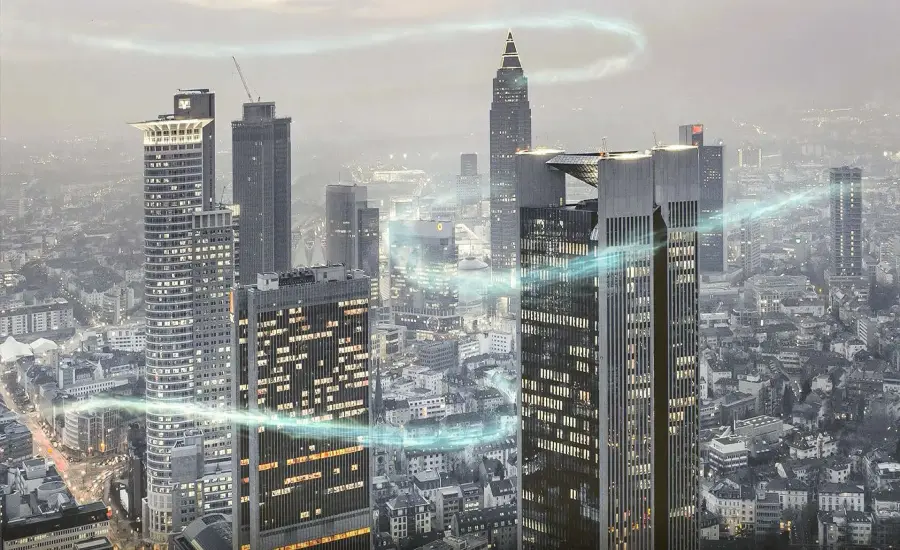
The industry’s first real-time, cloud-based predictive maintenance solution. Our smart, machine-learning, Internet of Things (IoT) solution dramatically increases elevator and escalator availability by reducing out-of-service situations through real-time diagnostics.
 China
China


